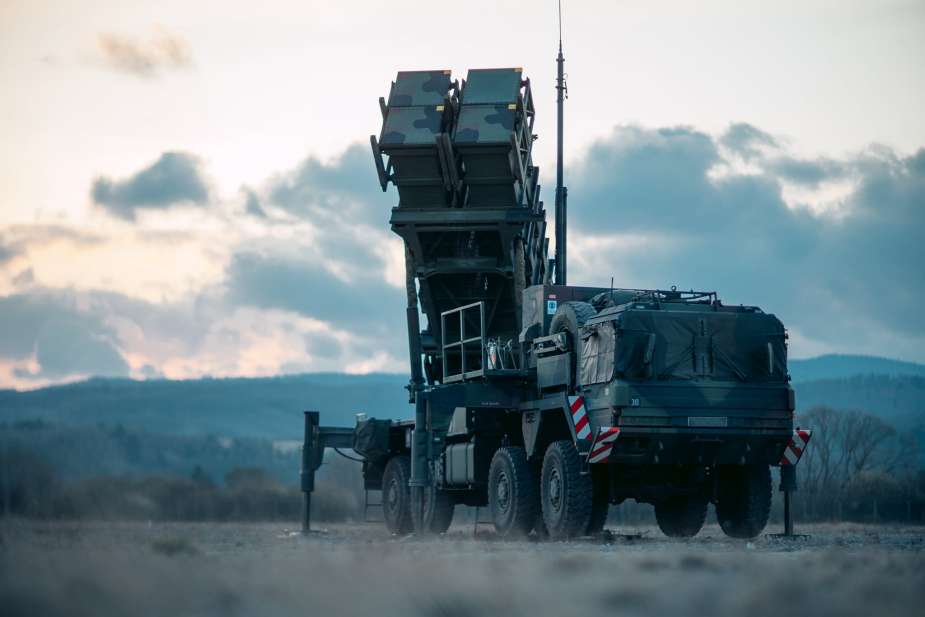Breaking news
Germany orders four US Additional Patriot air defense missile systems.
On March 21, 2024, Raytheon, a division of RTX Corporation, was awarded a contract valued at $1.2 billion to supply the German government with four additional Patriot Configuration 3+ air and missile defense systems. This announcement closely follows the German Bundestag's Budget Committee's approval on March 20, 2024, to purchase four new Patriot systems and retrofit kits for existing radar units.
Follow Army Recognition on Google News at this link

This purchase, which could include up to four new Patriot air defense systems, follows Germany's provision of two Patriot systems to Ukraine. (Picture source: Bundeswehr)
The contract includes the delivery of the latest Patriot Configuration 3+ systems, which consist of radars, launchers, command and control stations, along with the associated spares and support services. This acquisition is intended to supplement Germany's current air defense infrastructure with advanced technological components.
The Patriot system is utilized by 19 countries worldwide, including the United States, Germany, and Ukraine. It has been operational in various capacities and environments, showcasing its utility against an array of threats, including long-range and tactical ballistic missiles, as well as other aerial threats.
Tom Laliberty, president of Land and Air Defense Systems at Raytheon, commented on the contract, stating its significance in terms of global air and missile defense capabilities and the continued trust in the Patriot system. He noted that the acquisition would support Germany in modernizing its air defenses and enhancing collaboration with NATO allies.
Following the German Bundestag's Budget Committee's approval on March 20, 2024, to purchase additional Patriot systems and new communication equipment with hearing protection, the German Armed Forces are now authorized to obtain four new Patriot systems and retrofit kits for existing radar units, following the supply of two Patriot systems to Ukraine. The financing for this, amounting to just under 1.4 billion euros, will come from both a special defense fund and the standard defense budget.
Completion of the services and deliveries related to this procurement is expected by the year 2029, indicating that the Patriot will continue to play a central role in Germany's air defense architecture beyond 2030. The latest budget allocation also includes the order of 500 guided missiles and associated spare parts for the systems.
Introduced into service in 1989, the US Patriot (Phased Array Tracking Radar to Intercept On Target) system, is designed as a mobile air defense solution capable of countering a range of threats up to 1,000 kilometers. The Patriot Configuration 3+ air defense system is an updated version of the previous Patriot missile systems, designed for intercepting various threats such as aircraft, ballistic missiles, and cruise missiles. This system is comprised of several components including interceptor missiles, launching stations, radar sets, control stations, power generation units, and high-frequency antenna masts. The missile segment includes the PAC-2 and the more advanced PAC-3 variants, the latter employing hit-to-kill technology for neutralizing threats through direct impact, which is claimed to enhance the defended area size compared to the PAC-2.
In the Configuration 3+, enhancements have been made to accommodate the capabilities of the PAC-3 Missile Segment Enhancement (MSE), including adjustments to the system’s hardware and software. The system can host different types of missiles in its launchers to allow for a varied defense approach against different threats. The radar and control aspects of the system have been updated, purportedly to extend the range and improve the engagement capabilities with the inclusion of the PAC-3 MSE. These updates are intended to support the system’s ability to address a variety of aerial threats with improved accuracy and reaction times.
Furthermore, the system is described as having improved mobility and rapid deployment capabilities, with a battery-sized element reportedly being able to be set up in less than an hour. The Engagement Control Station, which requires human operation, has been updated to provide improved interfaces and identification systems, and it has been made compatible with the Army's Integrated Battle Command System. This compatibility is intended to enhance the system’s connectivity with other defense elements, aiming for a more integrated approach to missile defense.























